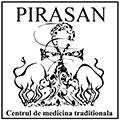Cardiovascular diseases affect a large part of Earth’s population. There is a wide range of factors that cause them. Anything that affects the inner wall of the blood vessels and impedes the transmission of the oxygen and the nutrients to the heart may be identified as a risk factor. The initial harmful agents in every heart-related disease are the following: smoking, food additives, noxae, and raised blood pressure. Eventually they lead to the sclerosis of the arteries, a condition called arteriosclerosis. The obstruction of the arteries leading to the brain causes the cerebrovascular accident (CVA) and the obstruction of those to the heart causes the myocardial infarction.
Arteriosclerosis is the most common of the cardiovascular diseases. It is characterized by the progressive thickening of the arteries’ walls and their consequent loss of elasticity, a condition that is caused by calcified deposits in the blood vessels. The alimentary regime is an essential factor in this process, because the accumulated cholesterol and the fats deposited upon the inner walls of the coronary arteries cause their stenosis; they obstruct the blood circulation and eventually trigger the cardiac crisis.
Angina pectoris�is the spasm of the cardiac muscle, spasm that is caused by the clogging of the artery and the oxygen deprivation of the respective area. This is a similar experience for a human being to ending up in a space without enough oxygen. The patient with angina pectoris experiences chest pain, mild pains in the shoulders, mandible and palms.
The problem is due to the partial obstruction of the blood flow resulted from arteriosclerosis and to the reduced capacity of tissue oxygenation. This thing causes disbalance between the blood incoming and outgoing the heart. In this situation, the stenosis of the blood vessels forces the incoming blood to dominate over the outgoing one and to burden the heart. Later, an inappropriate amount of blood returns to the lungs, to the legs and to other organs. By genetic inheritance, a number of babies are born with blockage of right artery.
The cases of miocardititis – which have a higher incidence in the persons of the third age – can be described as degeneration of the cardiac muscles.
This type of disease is characterized by the inflammation of the cardiac muscles. Cardiac arrhythmia can be diagnosed by the abnormal atrial and ventricular heartbeats. The condition is felt as a lack of rhythm in the contractions of the cardiac muscle and it betrays the fact that the heart needs nutrients; that it is overworked or exhausted. The disease is also influenced by the inappropriate function of the digestive apparatus, accompanied by gas, stomach blockage and allergies. The main factors that trigger various forms of cardiac diseases are hypertension and stress.
As a factor, stress is often associated with bad alimentary habits and with the excessive consumption of sugar, caffeine, alcohol, and salt; with the lack of physical exercise and obesity. In time the thyroid dysfunctions may also cause cardiac diseases.
Cardiac diseases affect men more often than women. Women are predisposed to developing cardiac diseases in their premenopausal and menopausal years, on account that, the body’s level of estrogen decreasing, also decreases the beneficent action of the respective hormone upon the cardiovascular system. In this respect, statistics show that the number of recorded woman deaths because of various cardiac affections are twice as many as those from other serious diseases, such as cancer.
Therefore, it is very important for each individual to assess the risk factors that may cause cardiac diseases. In the initial stage of a cardiac disease, the symptoms are not very obvious because of the slow development of such a disease, over the period of several years. The symptoms become obvious and discomfortable when the arteries have grown stenosed enough, as is the case of arteriosclerosis.
In the traditional medicine, arteriosclerosis is also called “the invisible killer” because many times it has an asymptomatic evolution; the patients do not suspect that they have a cardiovascular problem.
The patients with blockage of right or left artery display the following symptoms: lack of air, edemas in the lungs and ankles, or the patients with angina pectoris have pains in the chest and in other parts of the body. The patients with angina pectoris may not realize they have a cardiac disease, because the symptoms may often be mistaken with those of other diseases. In this case, the periodic medical examination is very important.
Everybody who suffers from a cardiac disease, after being diagnosed and treated for a time, should go to a clinic of traditional medicine. In this case, the traditional medicine specialist can assess the situation correctly, as well as the secretion of DHEA, the hormone that acts prophylactically against cardiac diseases. After doing the assessment, the traditional medicine specialist decides upon the treatment which, in principle, consists of acupuncture and hydroalcoholic extracts containing, among others, herbs such as ALFALFA and APDJUHA.
At the same time, the doctor also uses HELATIOTHERAPY. Physical exercise, too, is very important in the treatment of this disease. It will be done at the particular pace indicated by the traditional medicine specialist .

